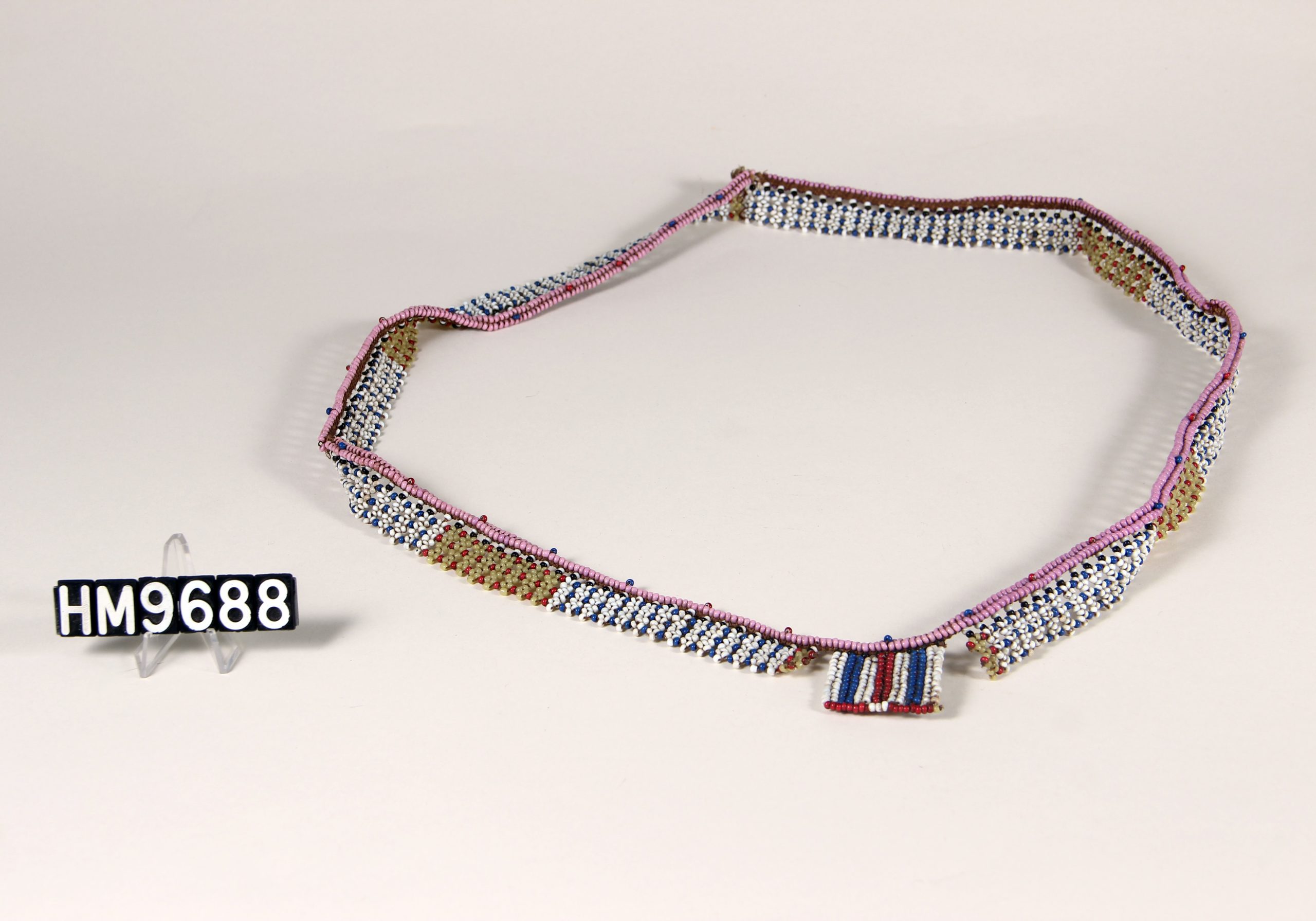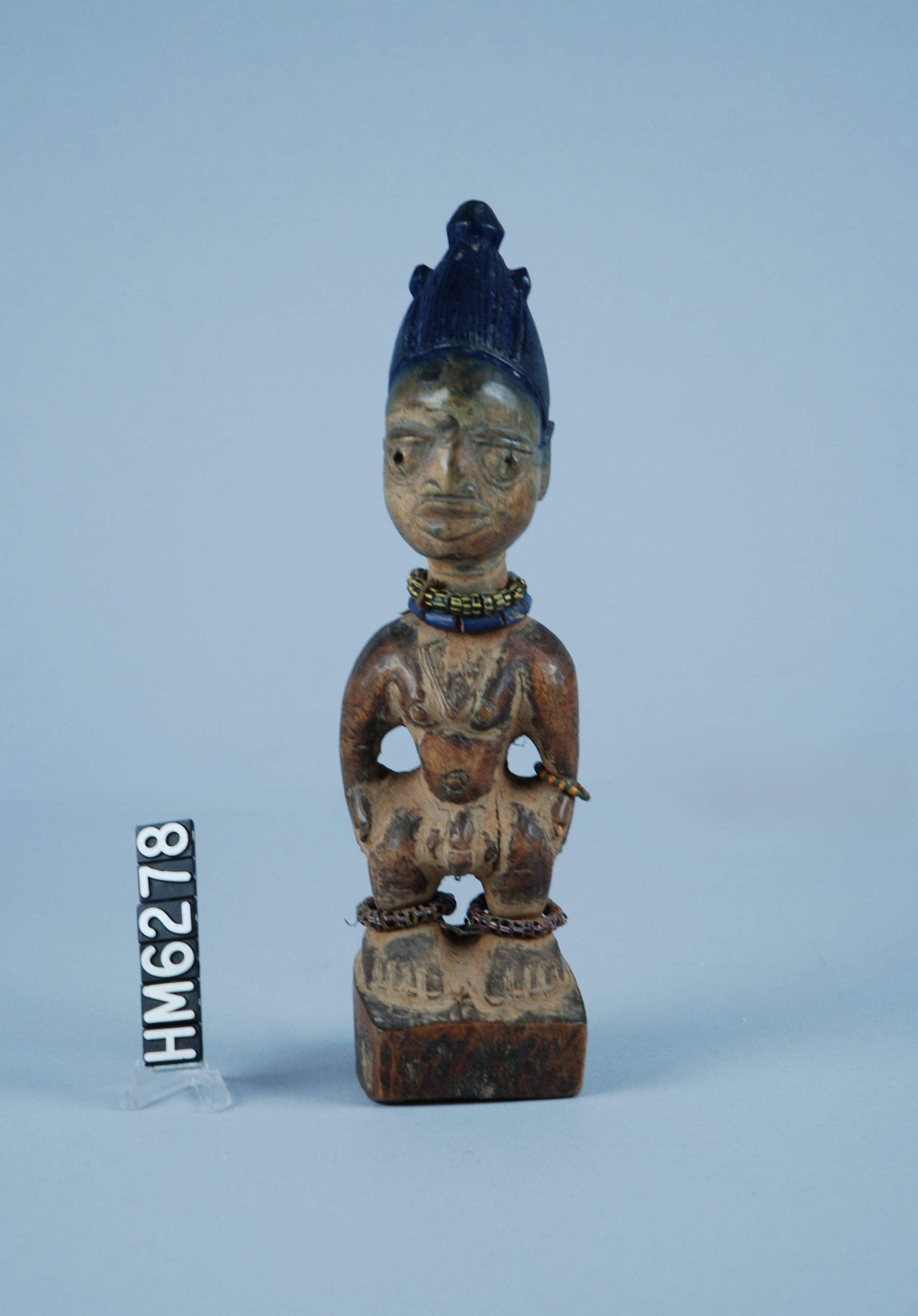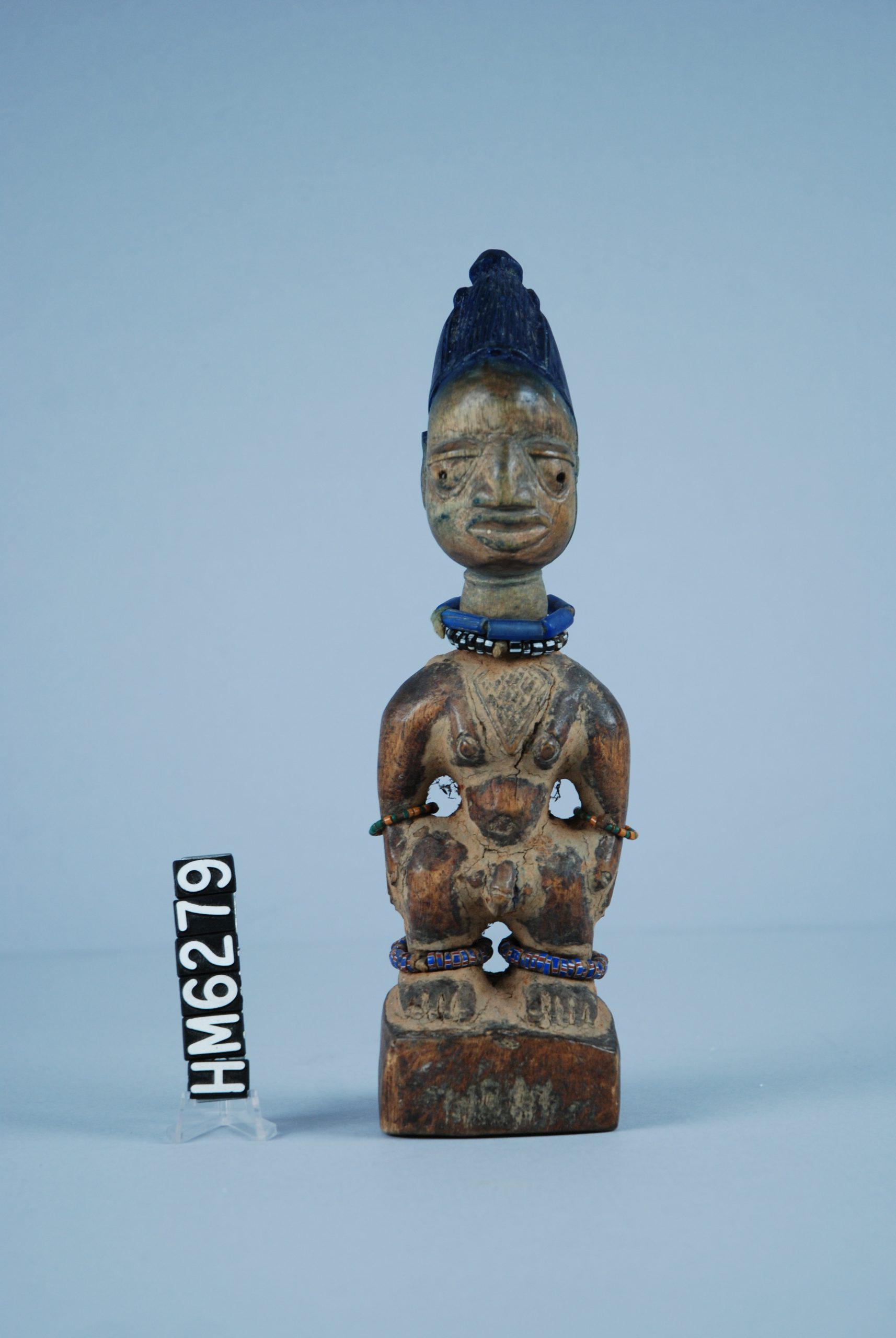Africa

African jewelry differentiates between the sexes, emphasizes the anatomy, and indicates social status and wealth, sometimes serving as a form of currency. Beads made from glass and precious stones, amber and gold, cowrie shells, ivory, and lost wax cast pendants and bracelets abound in African jewelry traditions.
The use of glass beads dates to the Ptolemaic period in Egypt and Venetian glass beads were used as a medium of exchange from the 1500s on with smaller glass seed beads becoming popular in Central, Eastern and Southern Africa. Cowrie shells from the Maldive Islands were also incorporated into jewelry.
Yoruba Twin Figures from Nigeria
19th Century
The Yoruba have one of the highest rates of twin births in the world. Twins are honored with carved memorial figures when they die. These figures, called Ere ibeji, carry on the spirit of the departed individual. The figures are cared for ritually. The elaborate hair styles feature indigo blue pigments.
Donated in Memory of Professor Vincent Hartgen
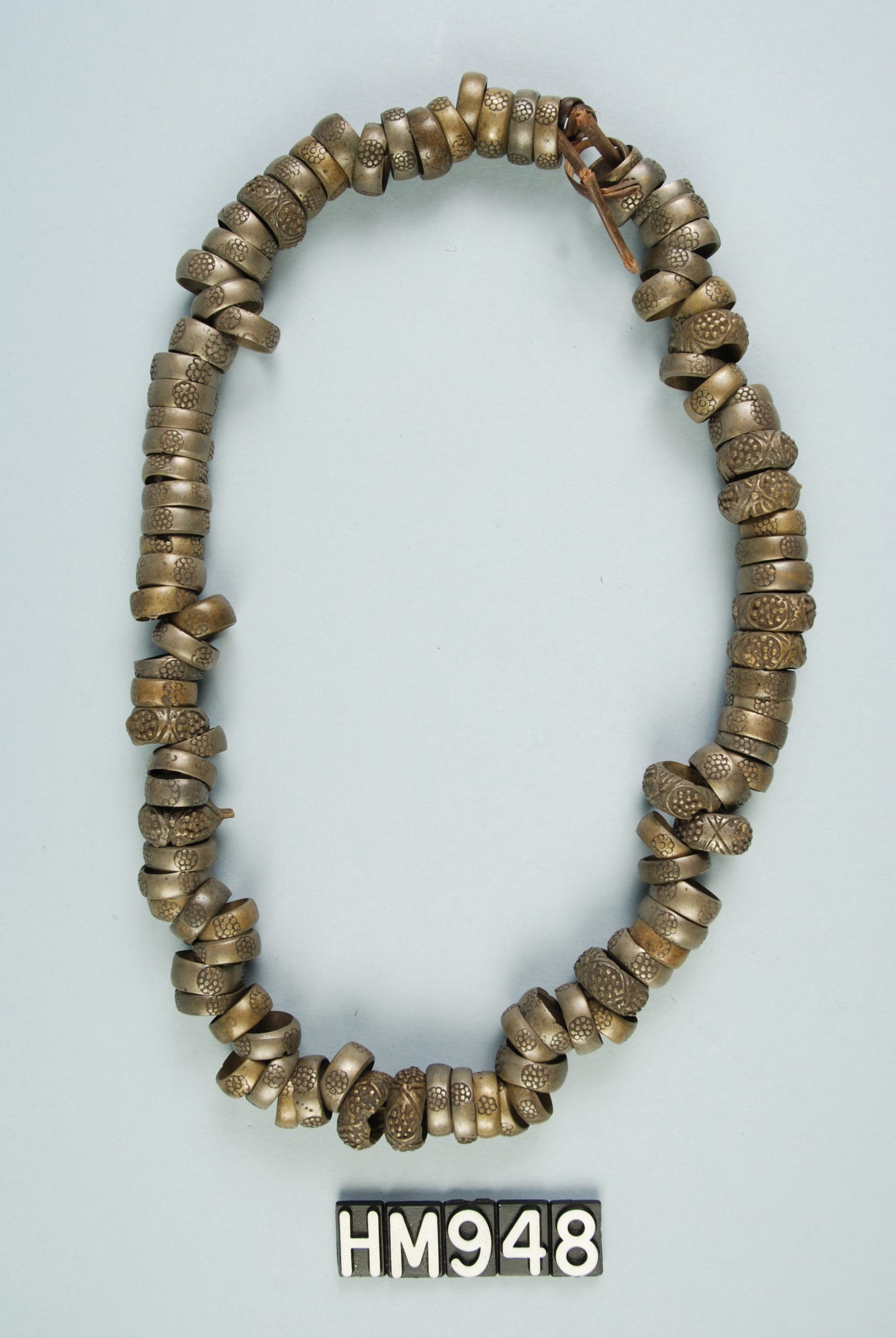
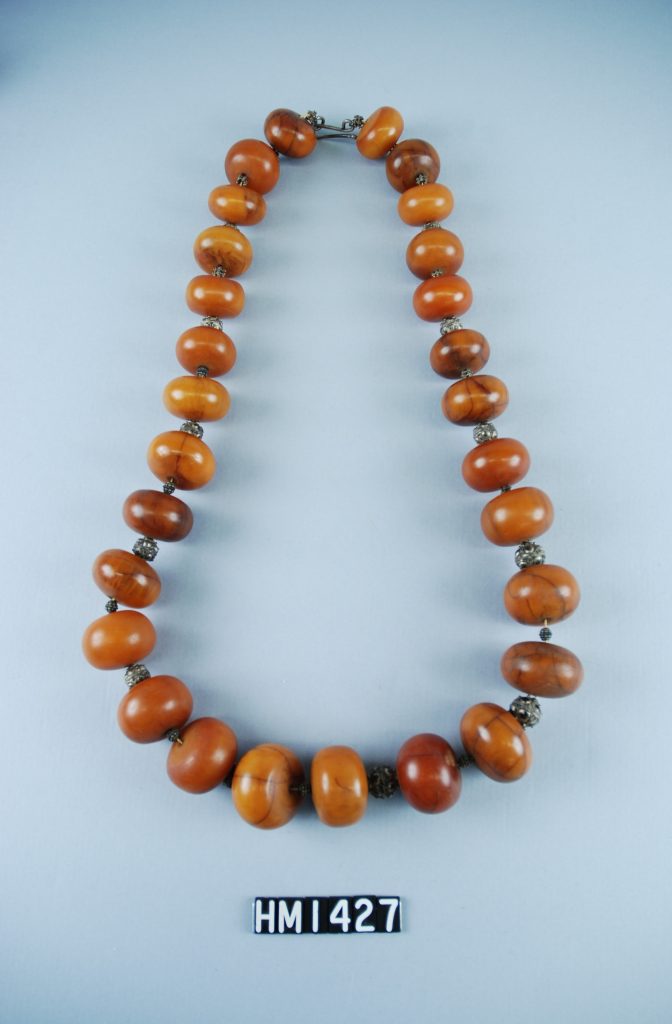
Amber and Silver Necklace
This necklace from Mali would likely represent a significant part of a woman’s dowry.
Mr. and Mrs. Robert Rothschild Collection
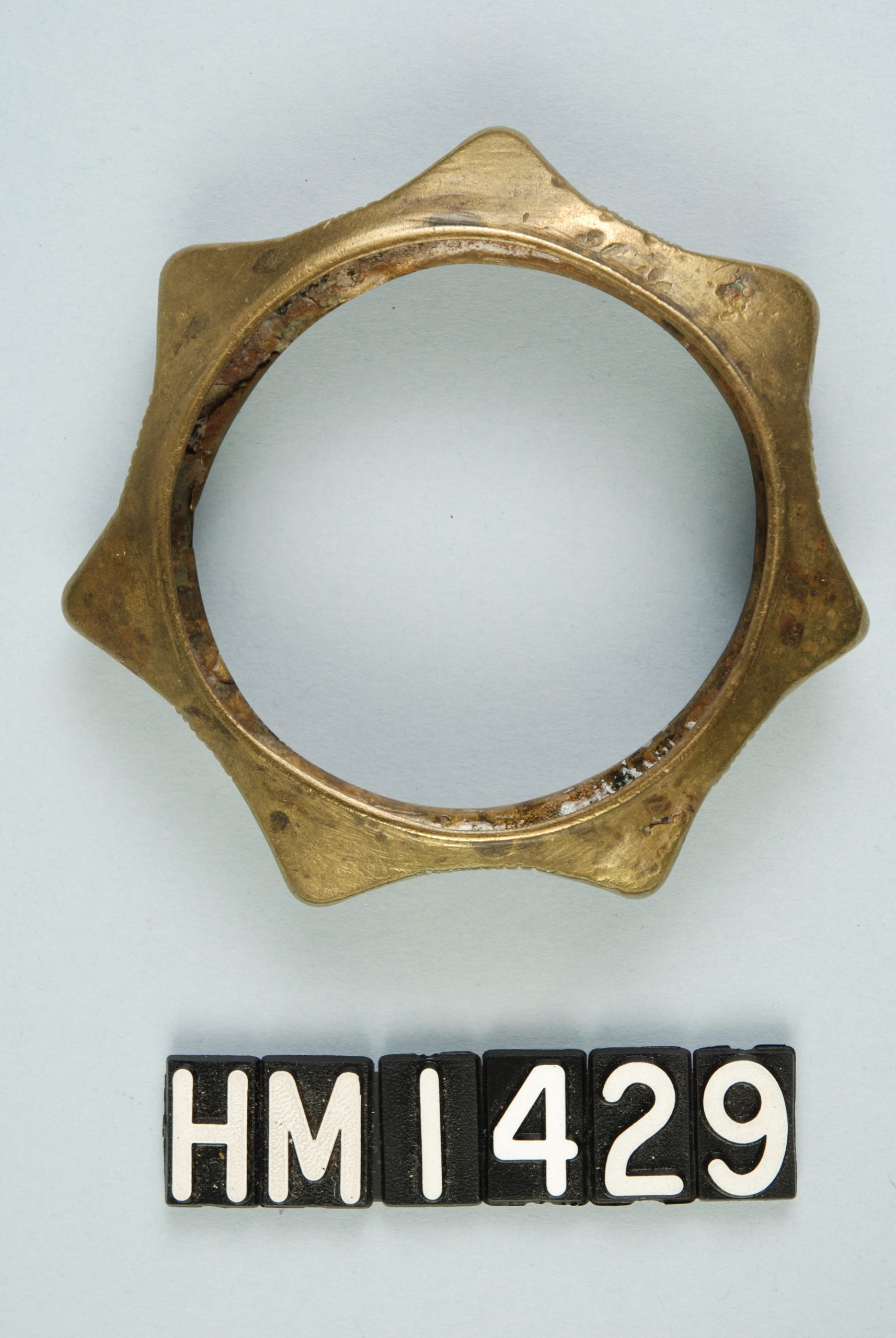
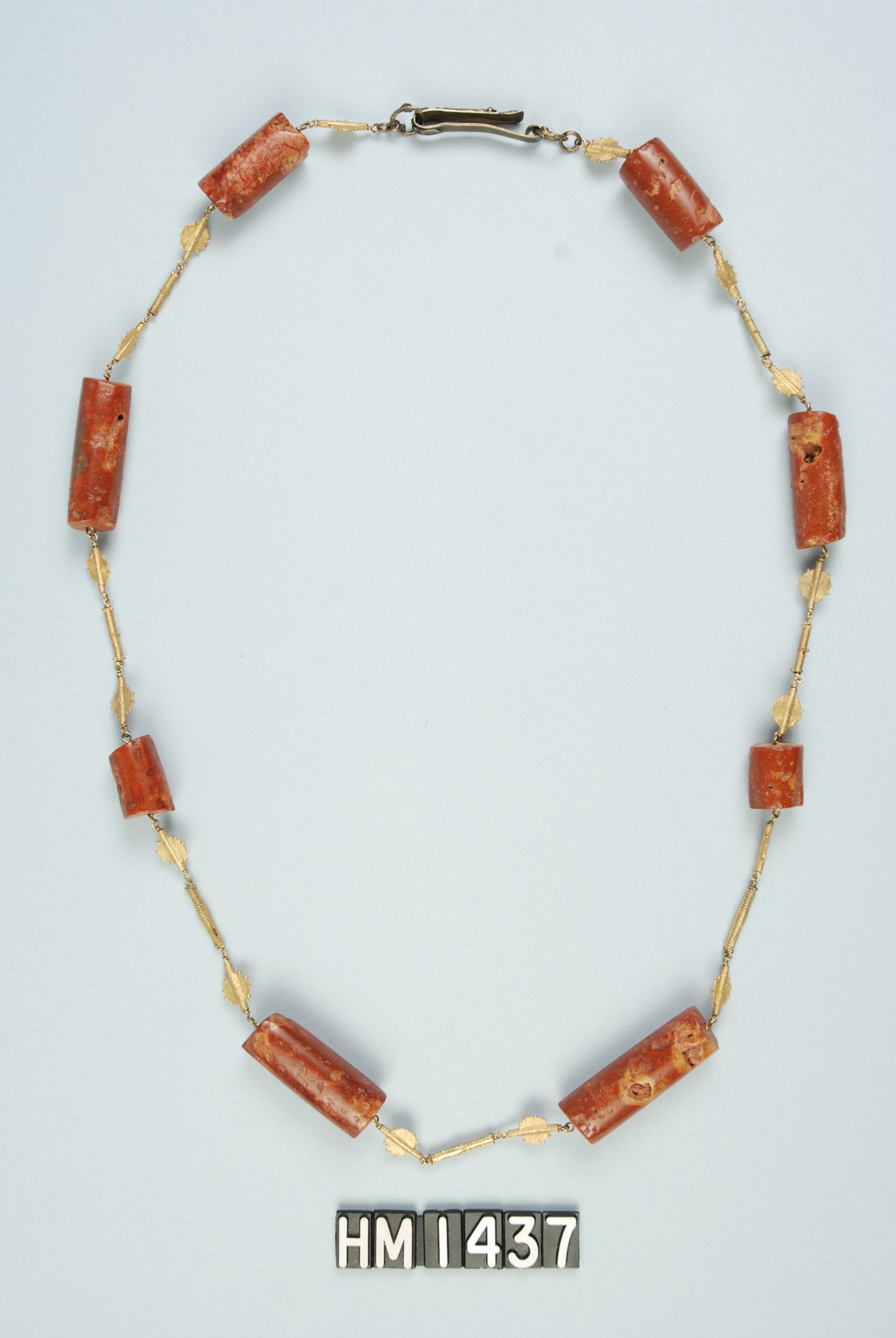
Ashanti Necklace
Late-19th to Early-20th Century
This necklace includes gold lost wax cast elements and bauxite beads.
Mr. and Mrs. Robert Rothschild Collection
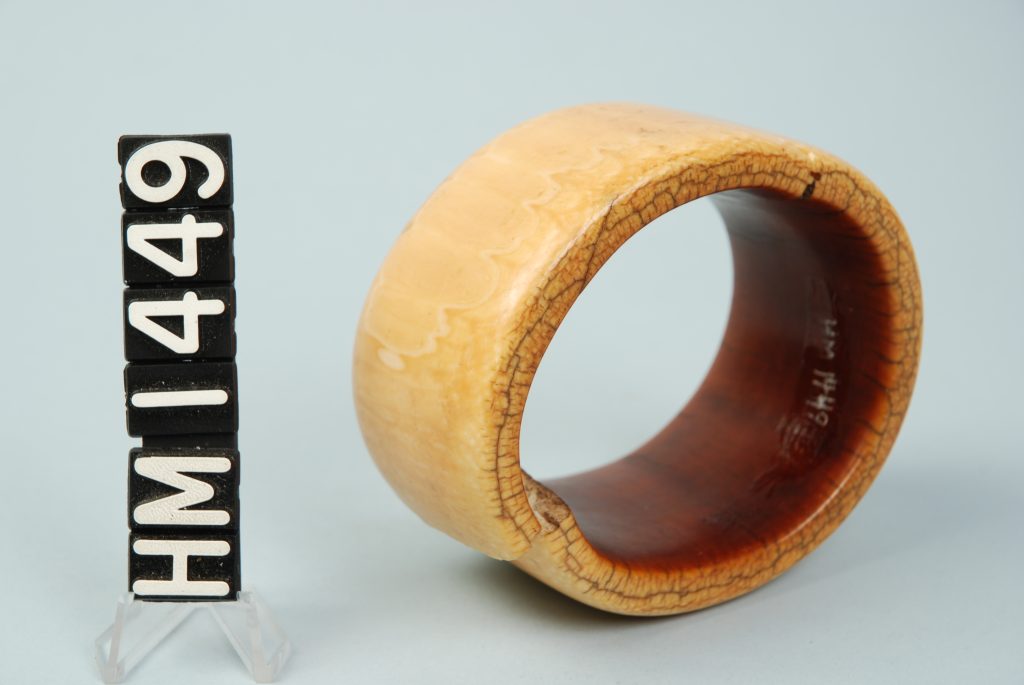
Ibo Ivory Bracelet
Ivory bracelets were worn by women indicating their social status — the heavier the bracelet the higher the wearer’s rank.
Mr. and Mrs. Robert Rothschild Collection
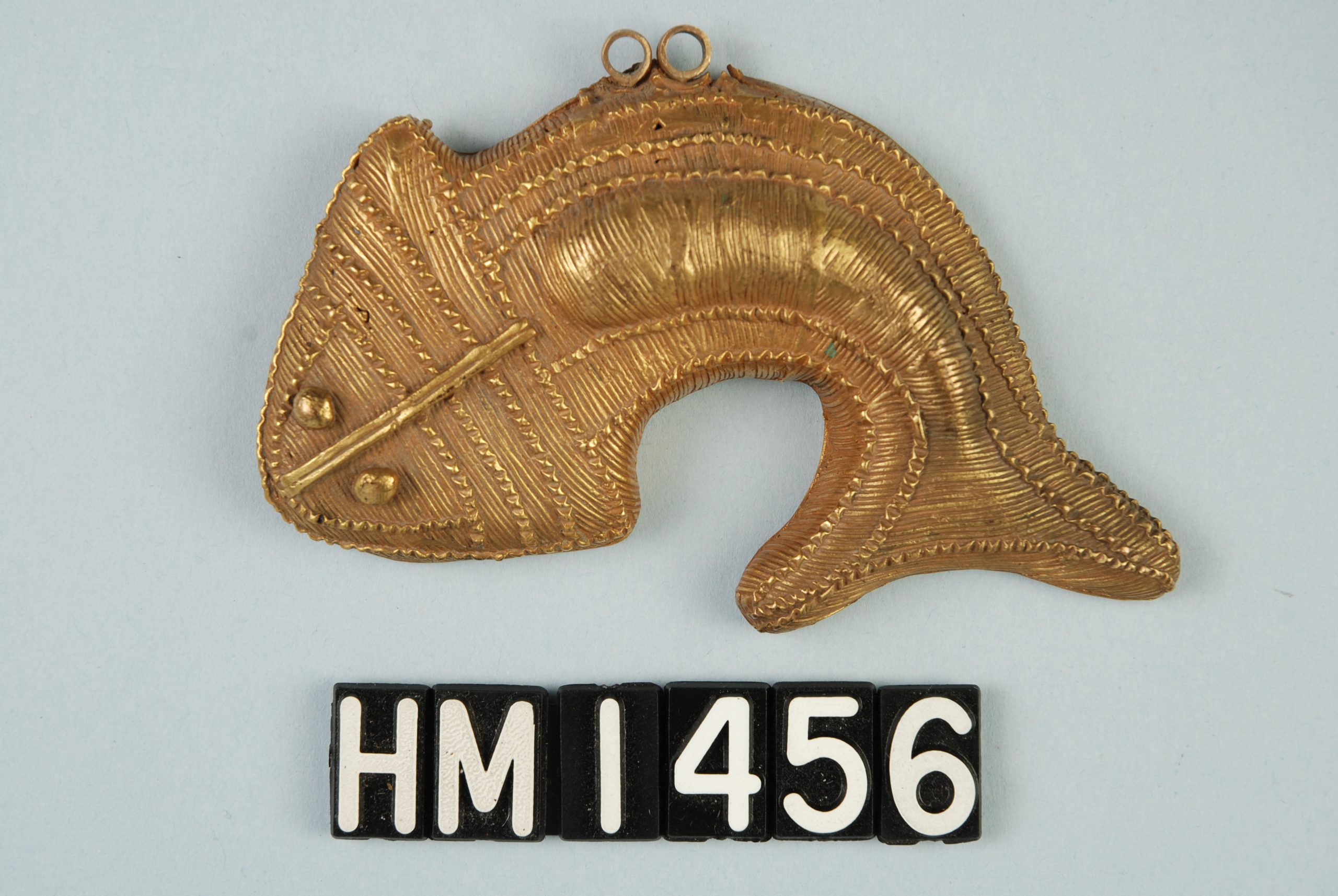
Ashanti Fish Pendant
Pendants were used in ceremonial events by diviners to ward off evil spirits.
Mr. and Mrs. Robert Rothschild Collection
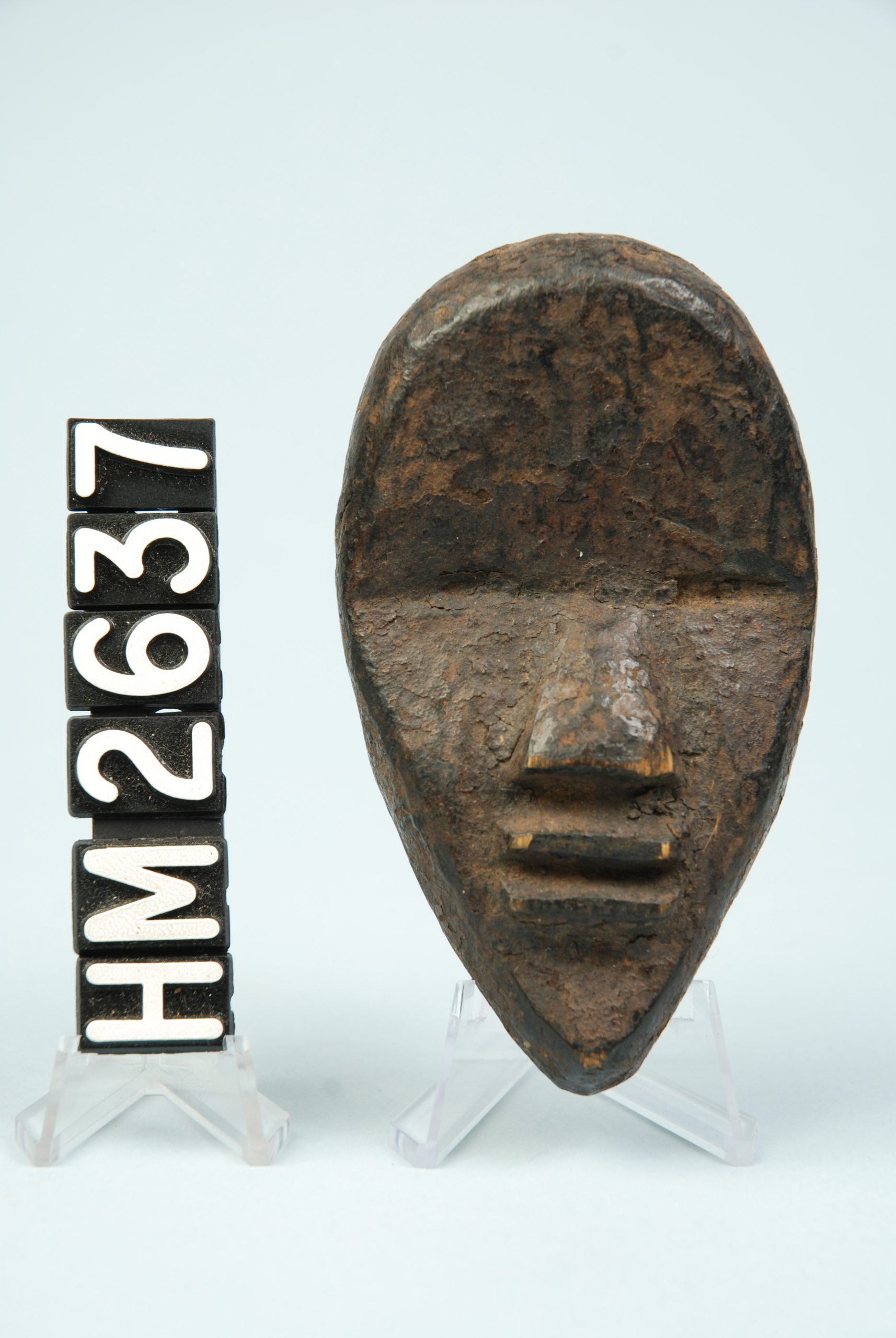
Dan Passport Mask
Miniature masks worn as pendants were often commissioned by families that possessed important family masks. These miniature versions served as a means of personal identification when traveling beyond their immediate community. Some were commissioned to provide the wearer
with protective powers or indicated that they were a member of a secret society.
Estate of Martha J. Stevens Collection
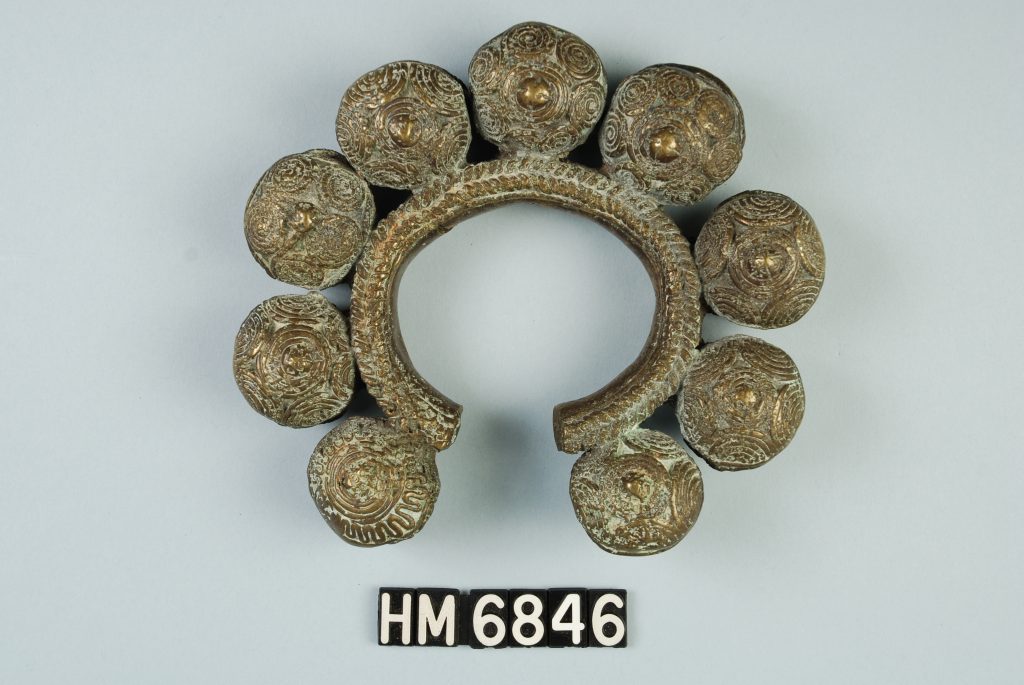
Dan Anklet
Mid-20th Century
A women’s social status was represented by the number and size of the bells.
Aline Hulbert Collection
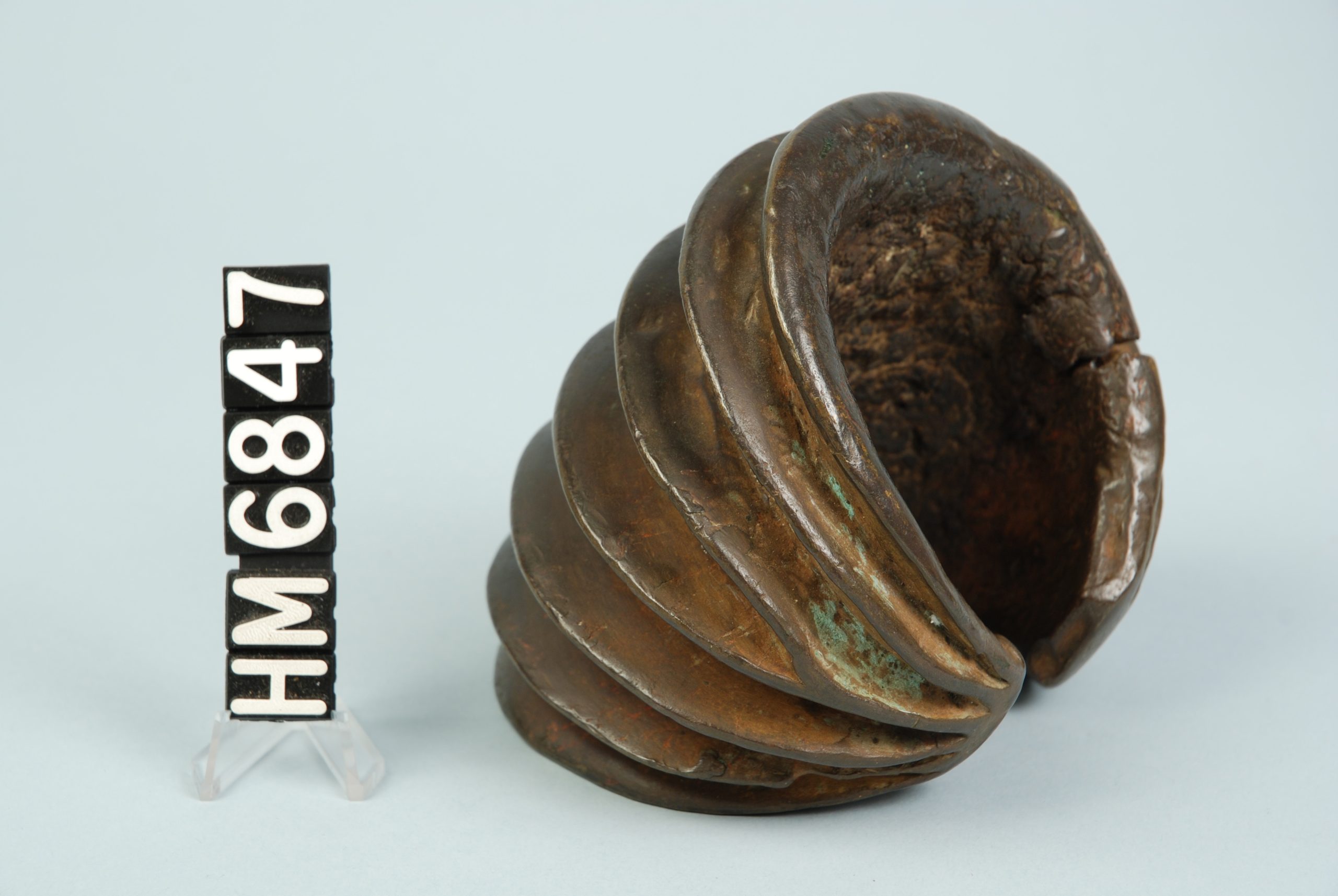
Fang or Kota Anklet from Gabon
Mid-20th Century
This anklet represents a form of currency used in marriage transactions.
Aline Hulbert Collection
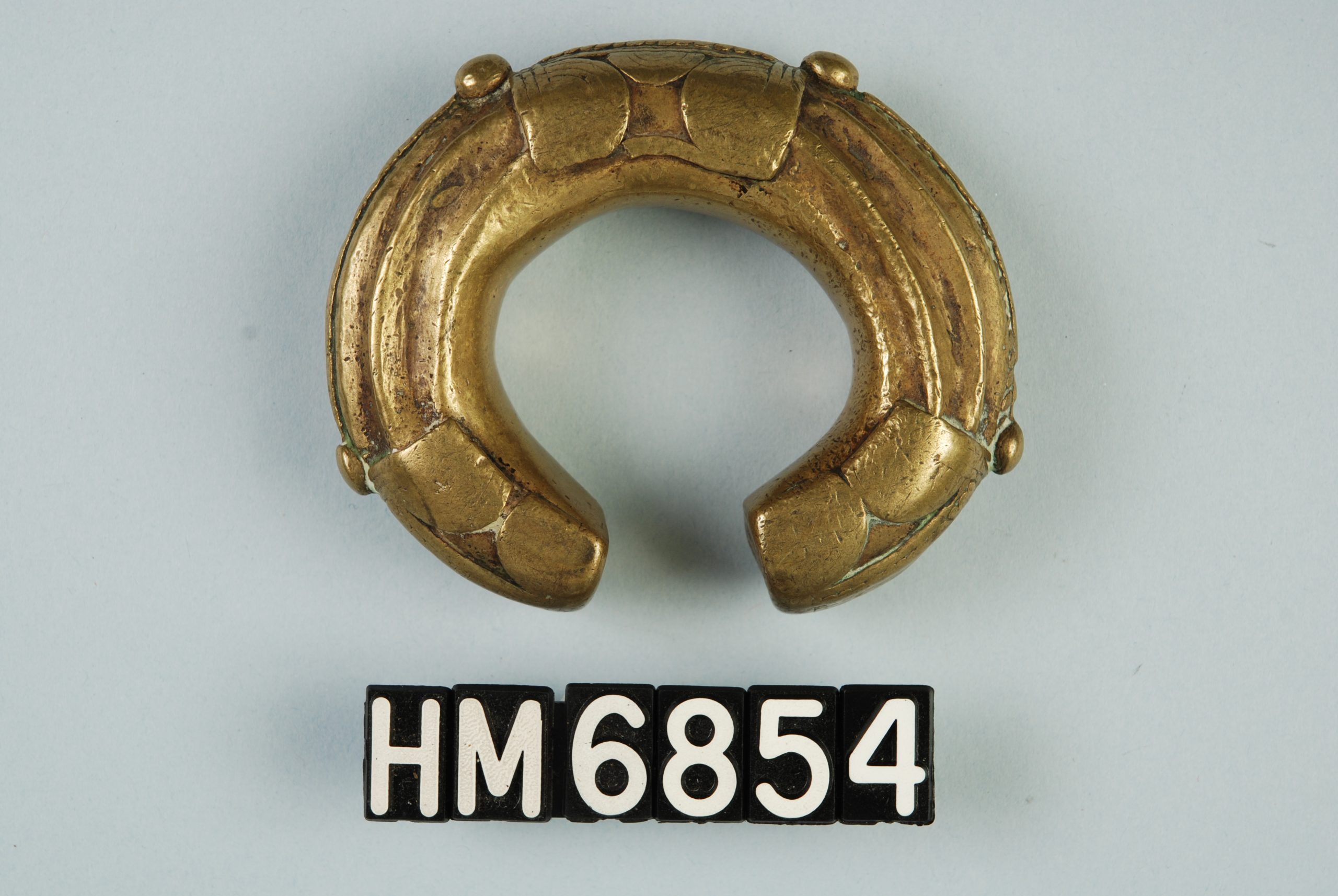
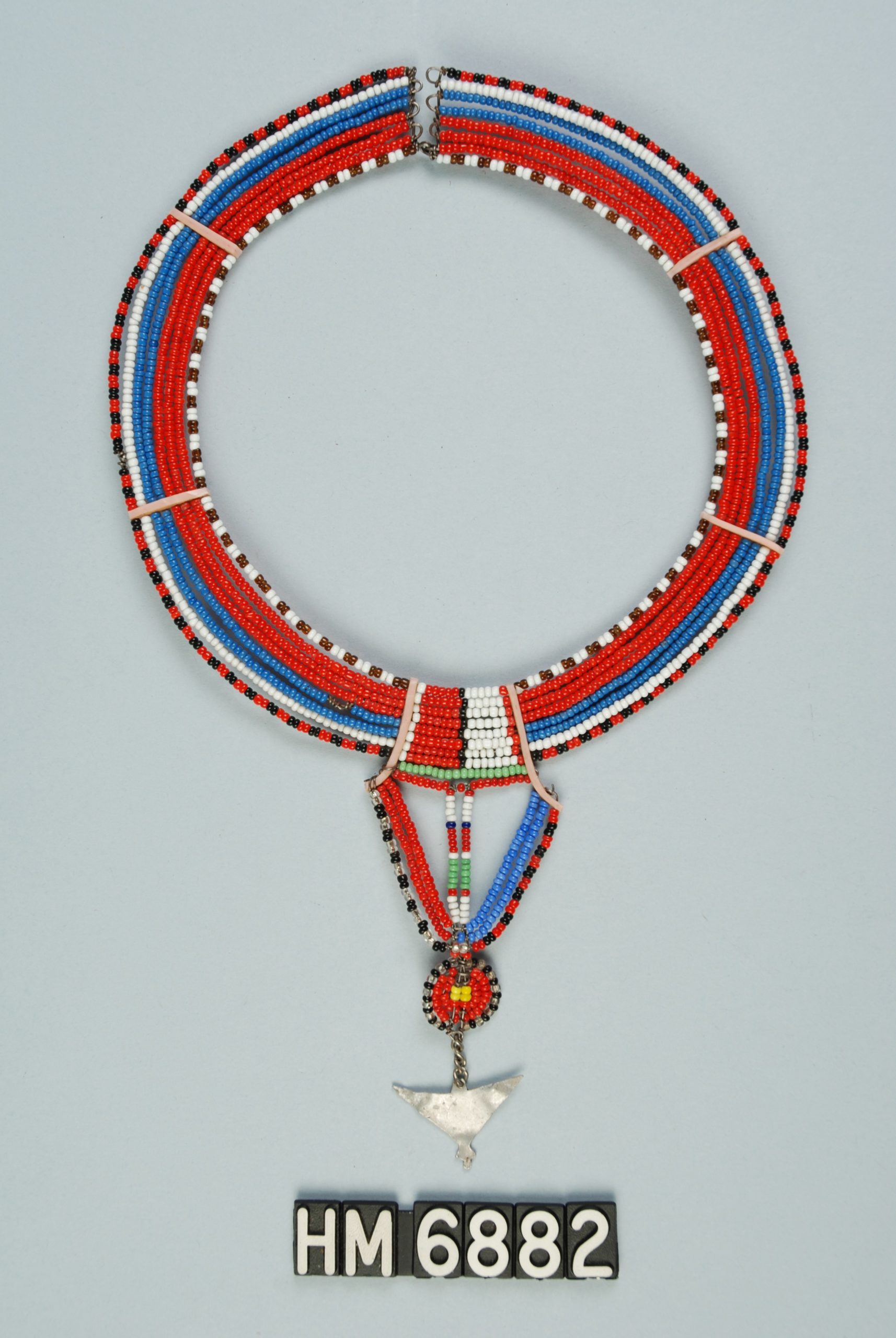
Maasai Beaded Necklace
c. 1960
Among the Maasai beaded necklaces were often everyday adornment and they could indicate social or marital status. Sometimes they were given as rites of passage or signs of respect and gratitude.
Harry T. Treworgy Collection
